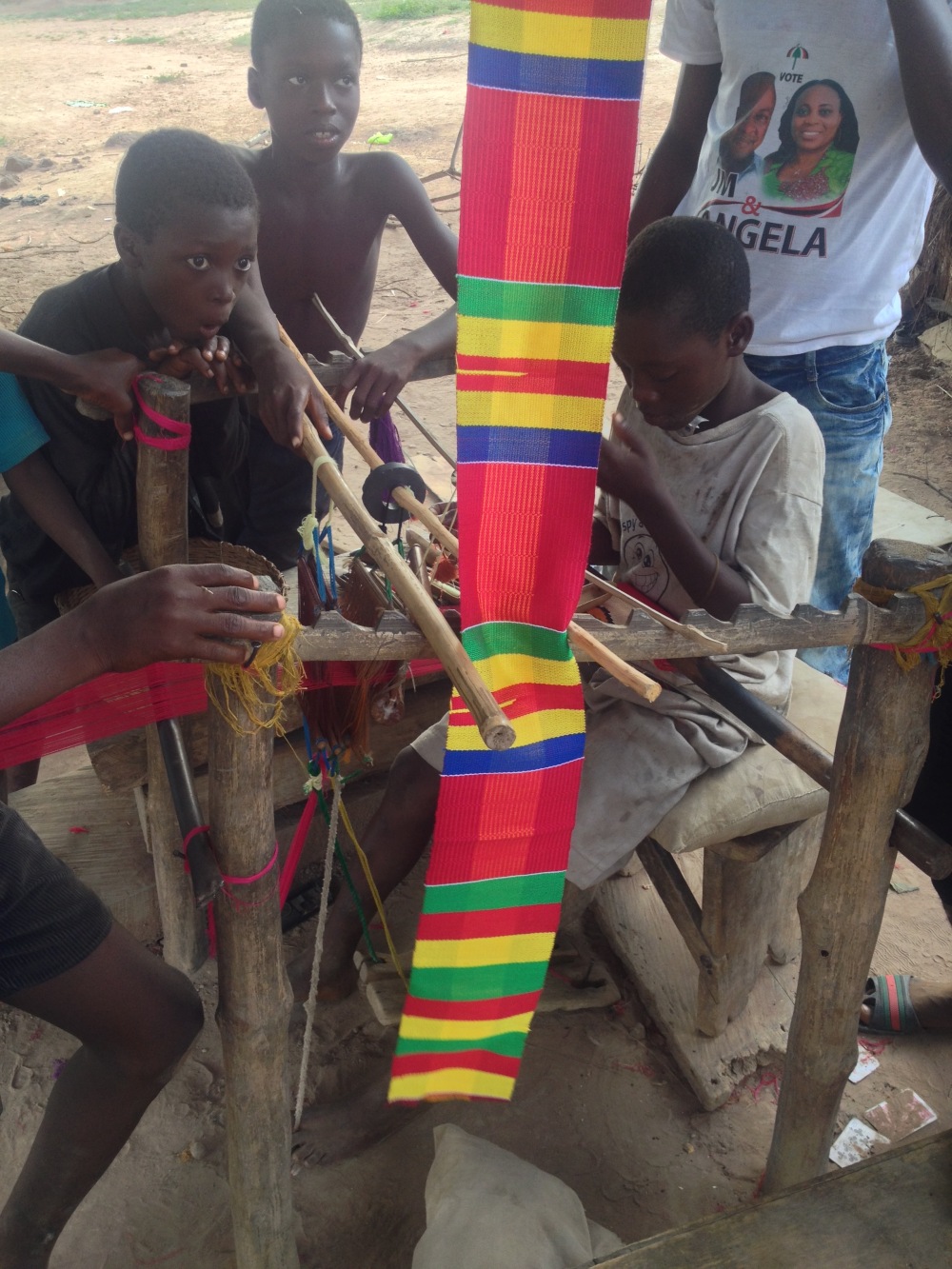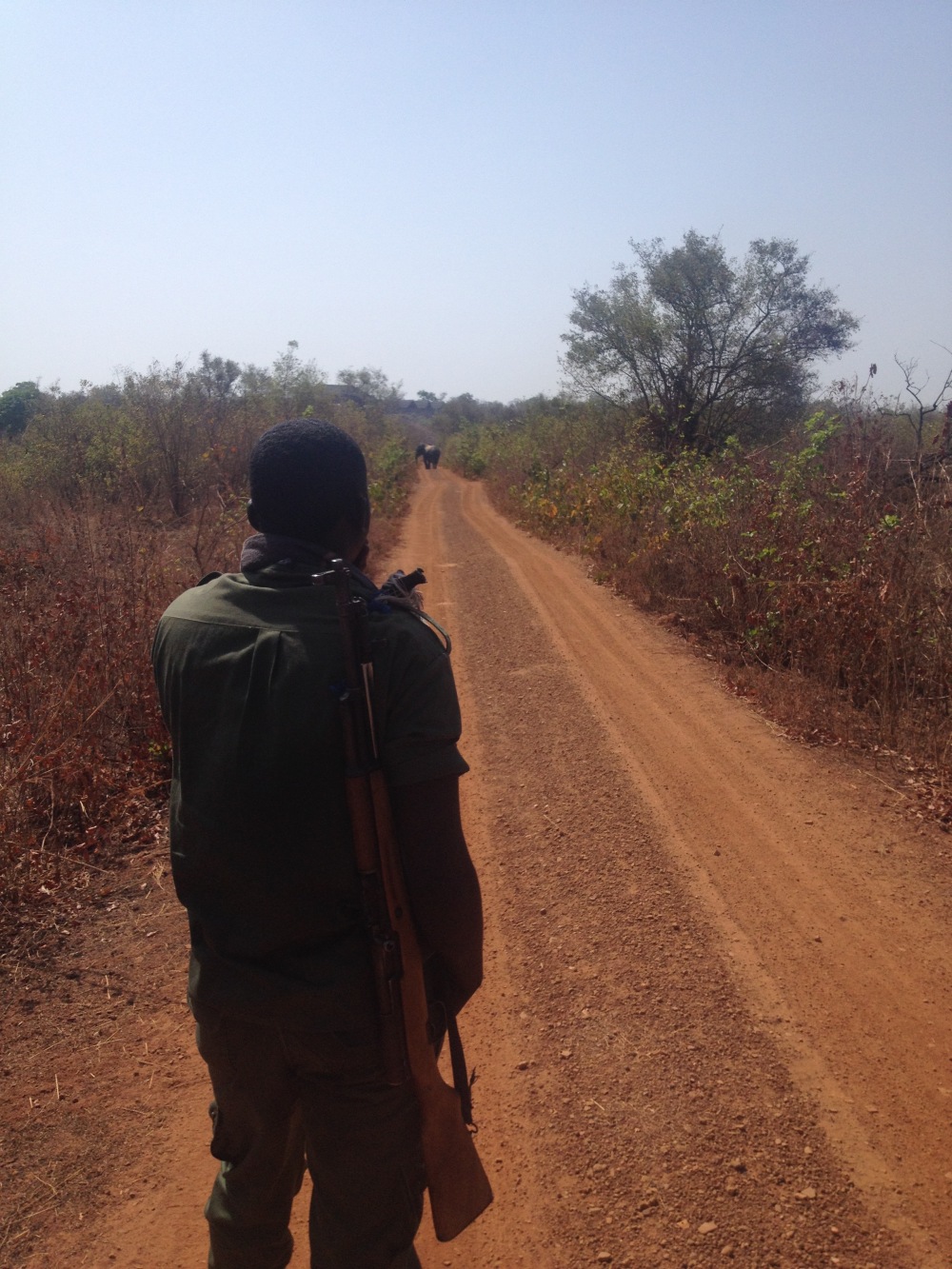This is going to be an extremely picture heavy post. My guidebook (Ghana: The Bradt Travel Guide by Phillip Briggs) describes the botanical garden as “a peaceful and often deserted oasis of tropical vegetation on the city outskirts, with fine displays of bamboo and flowering trees, many labeled specimens, and beautiful butterflies.” Although beautiful it was, I’m not quite sure that I visited the same garden as Mr. Briggs.

Out for a walk in the park!
I initially attempted to visit the botanical garden on my first day in Kumasi after getting settled in to the Engineering Guesthouse. After a sweltering thirty minute walk to get there, I was told that the gardens were closed to the public after 5:00 PM. I had arrived at 4:58 PM… Let the thirty minute walk back to central campus begin! It wasn’t a total loss however; this is how I met one of the planning students from last week’s post.

One of the many giant termite mounds dotting the landscape.
A few days later, I found the time to give it another go. This time, I went at noon o’ clock, plenty of time to explore the gardens before closing, and possibly the worst time of day to be out and about in the sun. After paying an entrance fee of 3 GHS, I was in!

This is a lot of bamboo.
Here are where the differences begin. While there was plenty of bamboo, I could not for the life of me find any sort of labelled specimens. And the park was far from deserted. People in fairly dressy clothes were entering and leaving and generally walking about without particularly examining the flora around them. My first guess was that unbeknownst to me, there was another entrance that students on campus were using to quickly cut through the gardens on their way to and from class.

My secret path.
Determined to find this path and verify my hypothesis, I set out for another way into the gardens. I passed by an individual speaking to himself in one of the shaded areas. I figured that he was a student practicing a speech or presentation in the relative isolation of the garden. Given my lack of fluency in Twi, this was a big if. Eventually, I found what seemed to be a path that led out of the garden, and ducking under some low-hanging branches, I followed it.
I had found it! A way in and out of the garden free from entrance fees that allowed for faster access to campus! In addition, I found some sort of commemorative stone referencing KNUST. This path seemed an extremely odd place to keep it. Still, no one else was following this trail, so it still didn’t account for the well dressed people traveling the park. It was time to head back to the main grounds and solve this mystery.

One of many butterflies I saw, it was the only that allowed me to get close enough for a picture.
Finally, I figured it out. Surrounding the main path were dozens of shaded areas complete with benches. In each one, people were wondering back and forth, pacing, while another individual (a man in all cases that I saw) was reading/proclaiming from a book. I had stumbled on seemingly impromptu church services taking place in the garden.
 In fact, none of the spaces in use seemed to be serving any other purpose than as a spot for worship. All of the groups seemed to share a similar style of worship as well, filled with exuberant and impassioned readings while the followers paced back and forth, muttering their replies. Ghana is known as one of the most religious and Christian countries in the world, and this style of worship can be found all around the country.
In fact, none of the spaces in use seemed to be serving any other purpose than as a spot for worship. All of the groups seemed to share a similar style of worship as well, filled with exuberant and impassioned readings while the followers paced back and forth, muttering their replies. Ghana is known as one of the most religious and Christian countries in the world, and this style of worship can be found all around the country.




















































 In fact, none of the spaces in use seemed to be serving any other purpose than as a spot for worship. All of the groups seemed to share a similar style of worship as well, filled with exuberant and impassioned readings while the followers paced back and forth, muttering their replies. Ghana is known as one of the most religious and Christian countries in the world, and this style of worship can be found all around the country.
In fact, none of the spaces in use seemed to be serving any other purpose than as a spot for worship. All of the groups seemed to share a similar style of worship as well, filled with exuberant and impassioned readings while the followers paced back and forth, muttering their replies. Ghana is known as one of the most religious and Christian countries in the world, and this style of worship can be found all around the country.






























